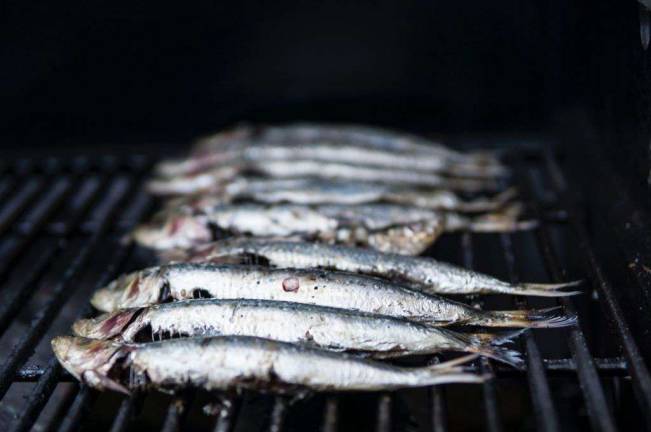10 foods to eat in 2019 & 1 to avoid in 2019

Once upon a time, Hippocrates (430–427 B.C.E.) urged the people of Athens to “Let food be thy medicine ...” and each year since then sees a new and improved list of magical medical dishes. Bonnie Taub-Dix, author of “Read It Before You Eat It,” a guide to food labels, says “plant-based eating” is a really hot trend right now, so it's no surprise that most very good foods for 2019 are fruits and veggies. But look closely: One fish has made the grade.
1. AVOCADO. This creamy single-seeded berry, aka the alligator pear, is practically an entire alphabet of good nutrition from the B vitamins (B6, folate, niacin, pantothenic acid, riboflavin), through C, E, and K, plus minerals (magnesium and potassium), lutein (a pigment that protections your vision), 6 to 7 grams of dietary fiber per fruit and heart healthy omega-3 fatty acids. Avocado toast, anyone?
2. BANANAS. Melatonin is a natural hormone that promotes healthy sleep. A 2017 report in the “Journal of Agriculture and Food Chemistry” showed a 180 percent jump in body melatonin levels among volunteers eating one banana at bedtime. That's a sweet dream for the one-in-three Americans who suffer from insomnia at some point.
3. BUTTER. It's baaaaaack. Butter boasts fat soluble vitamins including the little known K2 which is intimately involved in calcium metabolism. It's also got butyrate, an anti-inflammatory fatty acid produced when good gut bacteria digest dietary fiber. Those may be two reasons why the Cleveland Clinic's Cardiovascular Medicine chair Steven Nissen says it's “not a sin to use a bit of butter to flavor your foods.”
4. CELERY. Hate kale? Loathe lettuce? Try celery. Like other leafy greens, it has naturally occurring inorganic nitrate, a substance that scientists at the Karolinska Institutet in Sweden say reduces the buildup of fat in the livers of lab mice — thus preventing nonalcoholic liver disease, a condition that in humans is a major cause of chronic liver disease with no approved treatments. Crunch.
5. CHEESE. Bring on the Brie: New data from the University of Texas Health Science Center at Houston finds zero “significant evidence” that dairy fats are linked to heart disease and stroke. In fact, says the study's corresponding author Marcia Otto, heptadecanoic fatty acid, one of several found in dairy foods including full-fat cheeses, “may lower the risk of death from cardiovascular disease, particularly stroke.”
6. COFFEE. Everyone knows that caffeine fires up neurotransmitters that help you think faster. Now, some studies suggest that coffee might also protect against Parkinson's disease. Caffeine alone doesn't do the trick, but when researchers at the Rutgers Robert Wood Johnson Medical School Institute for Neurological Therapeutics fed lab mice caffeine and eicosanoyl-5-hydroxytryptamide (EHT), a fatty acid found in the waxy coating of coffee beans, the combination seemed to reduce the buildup of proteins in the brain linked to Parkinson's. Will this good news prove to be good? Right now, your guess is as good as any nutrition expert's, but for the moment, java's jake.
7. ORANGE JUICE. In November, scientists at Harvard's T.H. Chan School of Public Health reported that men who drank orange juice every day were 47 percent less likely to develop poor thinking skills than the men who drank less than one serving per month. The research says this shows a relationship but not definite proof of a link. Good enough.
8. PEARS. Apples are more popular, but pears are more nutritious. True, one average 5-ounce fresh pear has 9 more calories than an average 5-ounce apple, but the pear has 25 percent more protein, 40 percent more iron, and 30 percent more dietary fiber including those tiny gritty particles that crunch when you chew the pear. Time to say, “As American as Mom and perfect pear pie.”
9. SARDINES. A 3.5 oz/100 g serving of canned tuna in water has a few less calories than sardines and a bit more protein. The heart-healthy omega-3 fatty acid content is pretty much equal, but sardines eaten with skin and bones shine with 240 mg bone-protective calcium vs. a measly 34 for the tuna. And for the enviro record, dolphins swimming alongside tuna are sometimes “accidentally” netted and killed, but not a single one ever went to his reward to make a sardine sandwich.
10. SWEET POTATOES. The folks at the Harvard School of Public Health want you to know that sweet potatoes, rich in potassium and vitamins A, B6 and C, can be baked or boiled, refrigerated, and, like pumpkin (also rich in A and C), added to everything from waffles to soup even when it's not Thanksgiving.
Carol Ann Rinzler is the author of “Nutrition for Dummies (6th edition).”
Ditch the Steak Knives: Red Meat Still Can't Cut ItAt the very end of 2018, the Cleveland Clinic released data showing that bodies belonging to people who eat a diet rich in red meat have three times more trimethylamine N-oxide (TMAO), a chemical linked to heart disease, than is found in bodies of those who eat only white meat (think chicken or turkey breast and fish) or mostly plant-based proteins.